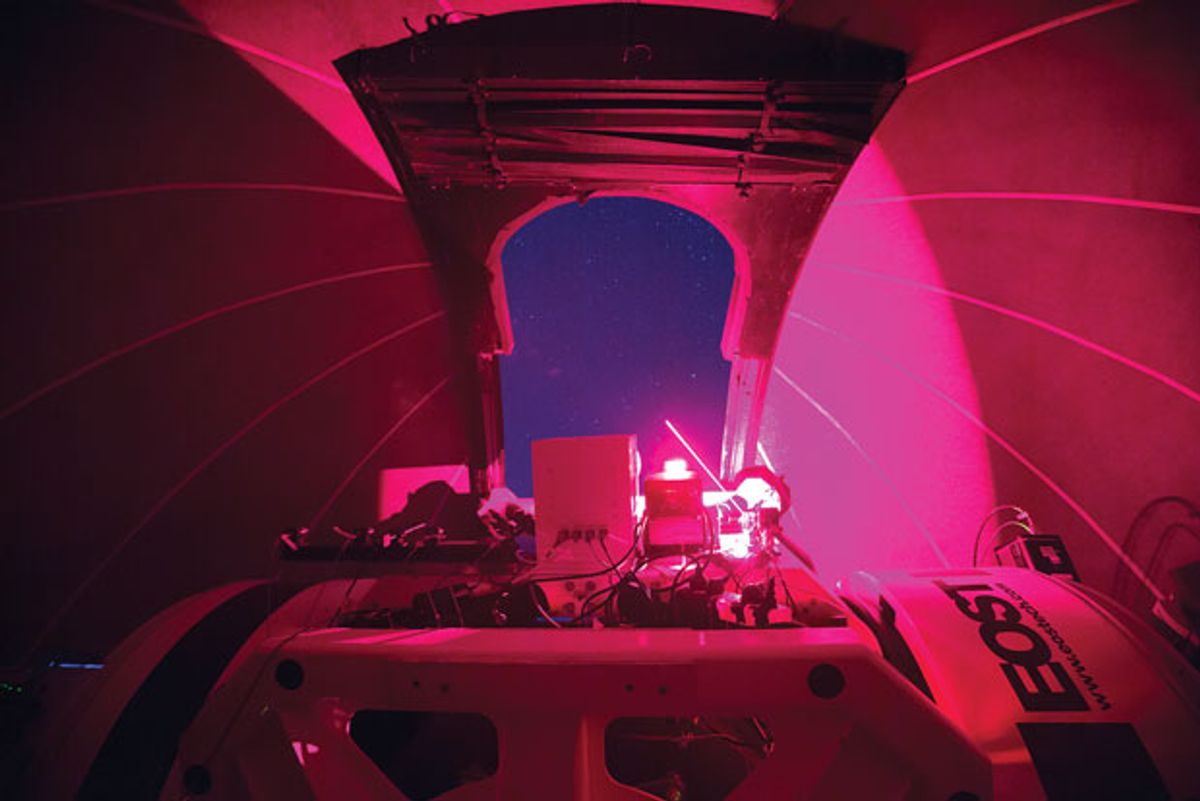The dream of a space-based, nigh-unhackable quantum Internet may now be closer to reality, thanks to new experiments with Chinese and European satellites.
Quantum physics makes possible a strange phenomenon known as entanglement. Essentially, two or more particles such as photons that get linked or “entangled” can, in theory, influence each other simultaneously no matter how far apart they are. Entanglement is essential to the workings of quantum computers, the networks that would connect them, and the most sophisticated kinds of quantum cryptography—a theoretically unhackable means of information exchange.
Back in 2012, Pan Jianwei, a quantum physicist at the University of Science and Technology of China at Hefei, and his colleagues set the distance record for quantum entanglement. A particle on one side of China’s Qinghai Lake influenced one on the other side, 101.8 kilometers away. However, entanglement gets easily disrupted by interference from the environment, and this fragility has stymied efforts at greater distance records on Earth.
Now, Pan and his colleagues have set a new record for entanglement by using a satellite to connect sites on Earth separated by up to 1,203 km. The main advantage of a space-based approach is that most of the interference that entangled photons face occurs in the 10 km or so of atmosphere closest to Earth’s surface. Above that, the photons encounter virtually no problems, the researchers say.
The researchers launched the quantum science experiment satellite (nicknamed Micius) from Jiuquan, China, in 2016. It orbits the planet at a speed of roughly 28,800 kilometers per hour and an altitude of roughly 500 km. “Through ground-based feasibility studies, we gradually developed the necessary toolbox for the quantum science satellite,” Pan says.
The experiments involved communications between Micius and three ground stations across China. Beacon lasers on both the transmitters and receivers helped them lock onto each other.
Micius generated entangled pairs of photons and then split them up, beaming the members of a pair to separate ground stations. The distance between the satellite and the ground stations varied from 500 to 2,000 km.
Recent quantum distance records
| Where | When | Distance | Medium | Entanglement | Quantum teleportation |
| Hefei, China | 2005 | 13 km | Through air | Yes | No |
| From La Palma to Tenerife in the Canary Islands | 2007 | 144 km | Through air | Yes | No |
| From Badaling to Huailai in China | 2010 | 16 km | Through air | Yes | Yes |
| Across Qinghai Lake in China | 2012 | 97 km | Through air | Yes | Yes |
| From La Palma to Tenerife in the Canary Islands | 2012 | 143 km | Through air | Yes | Yes |
| Between the satellite Micius and three Chinese ground stations | 2017 | 1,203 km | Through air to space | Yes | No |
| From Alphasat I-XL and Teide Observatory in Tenerife, Spain | 2017 | 38,600 km | Through air to space | No | No |
The record distance involved photons beamed from Micius to stations in the cities of Delingha and Lijiang. The experiments transmitted entangled photons with a 1017 greater efficiency than the best optical fibers can achieve. “We have finally sent entanglement into space and established a much, much larger quantum optics laboratory, which provides us a new platform for quantum networks as well as for probing the interaction of quantum mechanics with gravity,” Pan says.
Although these experiments generated roughly 5.9 million entangled pairs of photons every second, the researchers were able to detect only about one pair per second. Pan’s team expects a thousandfold improvement in this rate “in the next five years,” he says. He also notes that the current transmission rate for entangled pairs is close to what’s necessary to provide quantum cryptography for very brief texts; five years from now, networks of satellites and ground stations could successfully transmit at megahertz rates.
In another study, researchers in Germany found they could measure the quantum features of laser signals transmitted by a satellite a record 38,600 km away. These findings suggest that satellites could play a role in quantum networks that use less sophisticated forms of quantum cryptography that do not rely on entanglement.
Quantum physicist Christoph Marquardt from the Max Planck Institute for the Science of Light, in Erlangen, Germany, and his colleagues experimented with the Alphasat I-XL satellite, which is in geostationary orbit. Alphasat used laser signals to communicate with a ground station at the Teide Observatory in Tenerife, Spain.
Marquardt notes that the laser communications technology they experimented with is already used commercially in space. That, combined with the success of his and his colleagues’ experiments, suggests that quantum networks that do not rely on entanglement could be set up “as soon as five years from now,” he says.
Marquardt acknowledges that entanglement enables more-sophisticated strategies for foiling eavesdroppers. But “our approach only needs relatively small upgrades to proven technology,” he says.
The German scientists are now working with satellite telecommunications company Tesat-Spacecom and others to design a quantum network. Though it will be based on hardware already employed in space, it will require upgrades such as adding a quantum random number generator, Marquardt says.
A version of this article appears in our Tech Talk blog.
Charles Q. Choi is a science reporter who contributes regularly to IEEE Spectrum. He has written for Scientific American, The New York Times, Wired, and Science, among others.



